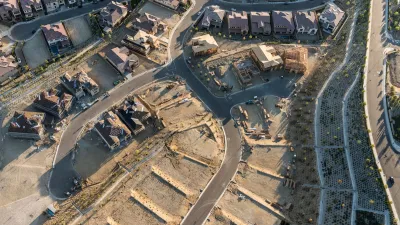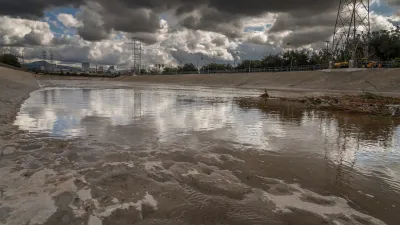Los Angeles County is leading a coordinated effort to help fire-impacted communities rebuild with resilience by providing recovery resources, promoting fire-wise design, and aligning reconstruction with broader sustainability and climate goals.

In the aftermath of the Eaton and Palisades fires, Los Angeles County is playing a central role in recovery efforts, working across multiple jurisdictions and in coordination with cities, state and federal agencies, and local organizations. The County has activated numerous task forces addressing a wide range of needs — from debris removal and temporary housing to infrastructure and long-term rebuilding — and launched one-stop permitting centers and a comprehensive recovery website to guide residents. With diverse conditions across affected areas like Altadena, Sunset Mesa, and the Santa Monica Mountains, the County is taking a tailored, place-based approach to recovery.
The Chief Sustainability Office (CSO), led by Climate Resilience Officer Matthew Gonser, is spearheading efforts to integrate fire resilience into rebuilding plans through participation in the Rebuilding and Long-Term Recovery Task Force. The County is preparing a Resilient Rebuild Resource Guide that will provide property owners and design teams with guidance on sustainable, fire-wise building strategies, incentives, and landscape design tips. Gonser emphasizes the alignment between rebuilding strategies and the County’s broader climate and sustainability goals, noting that practices like building hardening and defensible space not only help individual properties but significantly improve neighborhood-scale resilience.
Key lessons from these fires point to the urgent need for smarter planning and construction in fire-prone areas. Embers, not just flames, are the leading cause of building ignition during wildfires, making structural materials and landscape design critical. Gonser highlights that while new state fire hazard maps will require stricter codes in some areas, others — like parts of the Eaton Fire zone — may not be covered unless policy changes are made. Moving forward, prevention strategies, property retrofits, and coordinated planning across entire communities will be essential to reduce future wildfire risks and support long-term regional resilience.
FULL STORY: Rebuilding With Resilience

Planetizen Federal Action Tracker
A weekly monitor of how Trump’s orders and actions are impacting planners and planning in America.

Map: Where Senate Republicans Want to Sell Your Public Lands
For public land advocates, the Senate Republicans’ proposal to sell millions of acres of public land in the West is “the biggest fight of their careers.”

Restaurant Patios Were a Pandemic Win — Why Were They so Hard to Keep?
Social distancing requirements and changes in travel patterns prompted cities to pilot new uses for street and sidewalk space. Then it got complicated.

Albuquerque Route 66 Motels Become Affordable Housing
A $4 million city fund is incentivizing developers to breathe new life into derelict midcentury motels.

DC Area County Eliminates Bus Fares
Montgomery County joins a growing trend of making transit free.

Platform Pilsner: Vancouver Transit Agency Releases... a Beer?
TransLink will receive a portion of every sale of the four-pack.
Urban Design for Planners 1: Software Tools
This six-course series explores essential urban design concepts using open source software and equips planners with the tools they need to participate fully in the urban design process.
Planning for Universal Design
Learn the tools for implementing Universal Design in planning regulations.
Heyer Gruel & Associates PA
JM Goldson LLC
Custer County Colorado
City of Camden Redevelopment Agency
City of Astoria
Transportation Research & Education Center (TREC) at Portland State University
Camden Redevelopment Agency
City of Claremont
Municipality of Princeton (NJ)





























